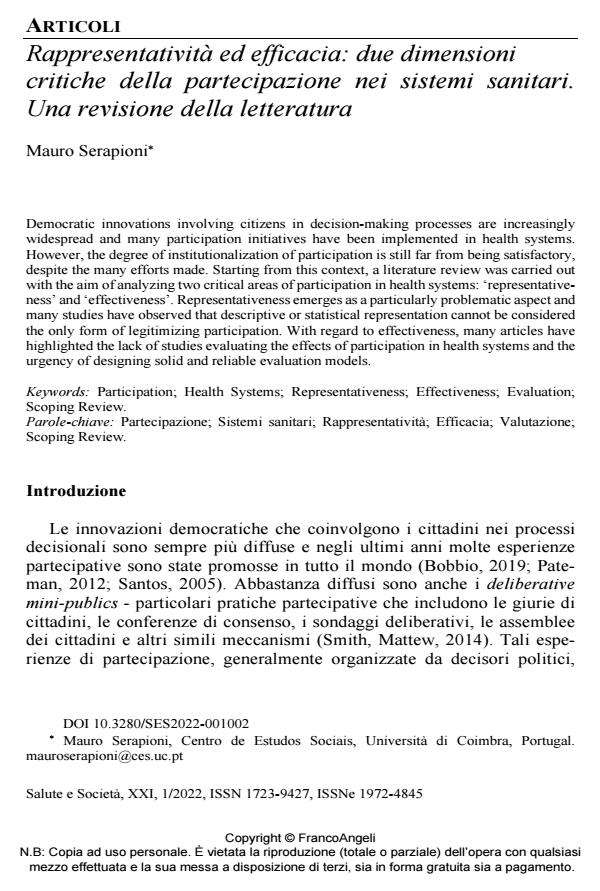Rappresentatività ed efficacia: due dimensioni critiche della partecipazione nei sistemi sanitari. Una revisione della letteratura
Titolo Rivista SALUTE E SOCIETÀ
Autori/Curatori Mauro Serapioni
Anno di pubblicazione 2022 Fascicolo 2022/1
Lingua Italiano Numero pagine 16 P. 13-28 Dimensione file 210 KB
DOI 10.3280/SES2022-001002
Il DOI è il codice a barre della proprietà intellettuale: per saperne di più
clicca qui
Qui sotto puoi vedere in anteprima la prima pagina di questo articolo.
Se questo articolo ti interessa, lo puoi acquistare (e scaricare in formato pdf) seguendo le facili indicazioni per acquistare il download credit. Acquista Download Credits per scaricare questo Articolo in formato PDF

FrancoAngeli è membro della Publishers International Linking Association, Inc (PILA)associazione indipendente e non profit per facilitare (attraverso i servizi tecnologici implementati da CrossRef.org) l’accesso degli studiosi ai contenuti digitali nelle pubblicazioni professionali e scientifiche
Democratic innovations involving citizens in decision-making processes are increasingly widespread and many participation initiatives have been implemented in health systems. How-ever, the degree of institutionalization of participation is still far from being satisfactory, de-spite the many efforts made. Starting from this context, a literature review was carried out with the aim of analyzing two critical areas of participation in health systems: ‘representativeness’ and ‘effectiveness’. Representativeness emerges as a particularly problematic aspect and many studies have observed that descriptive or statistical representation cannot be considered the only form of legitimizing participation. With regard to effectiveness, many articles have high-lighted the lack of studies evaluating the effects of participation in health systems and the urgency of designing solid and reliable evaluation models.
Parole chiave:Partecipazione; Sistemi sanitari; Rappresentatività; Efficacia; Valutazione; Scoping Review.
Mauro Serapioni, Rappresentatività ed efficacia: due dimensioni critiche della partecipazione nei sistemi sanitari. Una revisione della letteratura in "SALUTE E SOCIETÀ" 1/2022, pp 13-28, DOI: 10.3280/SES2022-001002